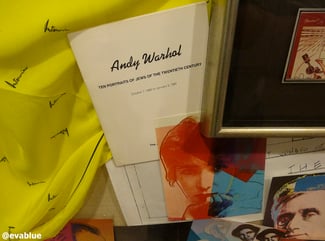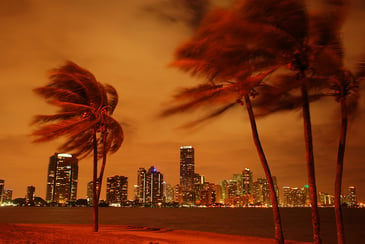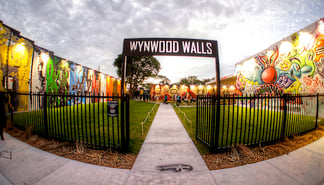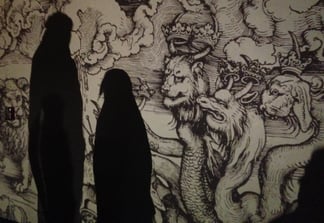Cristina Favretto has served as a special collections librarian at a number of institutions throughout her career. She is currently the Head of Special Collections at the University of Miami; her previous positions include: Director of the Sallie Bingham Center for Women's History and Culture at Duke University, Curator of Rare Books at UCLA, and Head of Special Collections at San Diego State University. Cristina's goal as a librarian is to build excellent, meaningful collections that are open and significant to the public. She has generously shared her collecting experiences with us in the following interview:
 Books Tell You Why: You’ve been a special collections librarian for some twenty years. What first drew you to the field? Are you passionate about a particular collecting area?
Books Tell You Why: You’ve been a special collections librarian for some twenty years. What first drew you to the field? Are you passionate about a particular collecting area?
Cristina: I started working in libraries immediately after graduating with my B.A. in English Literature and Art History. I moved to Boston and got a job at the Boston Public Library--a wonderful opportunity where I worked for a month in every department and branch. I was called a “rotating paraprofessional,” a term that appealed to me a great deal and made me feel that perhaps I should wear a tutu to work. They also paid for half of my tuition at library school.
Unfortunately the school I was attending, the University of Rhode Island, lost its accreditation (later to be regained), and the terms of the position stipulated that I needed to be in an accredited MLS program. The only other “game in town” was Simmons College, which I couldn’t afford at the time. So I started going to art school as an alternative, because as we all know there are always great job opportunities for performance artists.
I became fascinated with the rare books department; when I returned to library school, my advisor at the University of Pittsburgh (Dr. Stephen Almagno, who was also a Jesuit priest) really encouraged my interest. I took a lot of classes and learned all I could about the field.

After graduation from the University of Pittsburgh, I got a great internship at the Warhol Museum, which was in the process of opening in Pittsburgh. My job was in the Archives Department, opening and inventorying the famous “Warhol Boxes” which consisted mostly of items that had been cleared off of Andy Warhol’s desk on a regular basis (I believe once a month). If I’m asked nicely and/or bought a nice glass of red wine, I can tell stories of some of the items found in the boxes. It was a perfect internship because it appealed to all my best and worst traits: curiosity, fascination with counterculture, nosiness, and a love of list-making—especially bizarre lists. It was an easy choice going into special collections after that experience!
Afterwards I became head of the Sallie Bingham Center for Women’s History and Culture at Duke University, a really wonderful position in a wonderful place. I was given many great opportunities to learn different aspects of what was entailed in the work of a special collections librarian, including curating exhibits, working with researchers, learning about digitization, copyright, etc. It was an extraordinary early position, and it set the course for my future professional development. So I really was able to work in special collections from the beginning.
In fact, you could say that I worked in libraries literally from the beginning. As a child, my father retrofitted our basement to create special spaces for my siblings and I. My brother got a woodworking shop and one of my sisters got a chemistry lab. I asked him to make my section into a library and I would loan books to my dolls and siblings. I believe I charged late fees, and that’s about as money-savvy as I’ve been since then. But honestly, I loved our tiny local Carnegie library and all the librarians who worked there.
My favorite collecting areas are neglected everyday life archives: diaries of non-famous people, things that tell non-mainstream stories about particular time periods, zines, and alternative magazines over every time period. I also enjoy working with prescriptive literature: household guides, books and magazines that told us how to act, dress, eat, and live a better life--books of manners. They’re often very charming and (sometimes unintentionally) amusing. I seek out the story that isn’t normally told—or stories that have been historically undervalued and neglected—and strive to preserve them and make them available for future researchers. An example of this is our Counterculture Collection at the University of Miami. It includes everything from obscure design and fashion journals to a great selection of zines: some 5,000 that are now widely used by our students, faculty, and outside researchers. I’m also very interested in culinary history; not just books but menus, photographs of restaurants, oral histories with chefs and just regular cooks. We’re starting to build such a collection at UM: I think it’s important to capture the food trends and ever-changing culinary scene in Miami, which is food-wise and in every other way as diverse a city as you’ll find anywhere in the United States!
Books Tell You Why: You’ve been the Head of Special Collections at the University of Miami since 2008. What drew you to that institution? What makes its special collections department unique?
 Cristina: They called me directly and invited me to interview. I’d never been to Miami before and thought it was an unusual place. The director at the time, Bill Walker, made it clear that nurturing special collections was a top priority. This was very attractive at a time when a great deal of time, money, and energy was being spent on digitization and digital collections—when there seemed to be a rather counter-intuitive shift towards keeping people away from libraries instead of drawing them there. Of course like most librarians I am wholeheartedly enthusiastic towards the many benefits digitization can bring, but it was very appealing to be in a place where the potential of books and archives to create a sense of excitement and shared values—and a community of learning—was seen as paramount.
Cristina: They called me directly and invited me to interview. I’d never been to Miami before and thought it was an unusual place. The director at the time, Bill Walker, made it clear that nurturing special collections was a top priority. This was very attractive at a time when a great deal of time, money, and energy was being spent on digitization and digital collections—when there seemed to be a rather counter-intuitive shift towards keeping people away from libraries instead of drawing them there. Of course like most librarians I am wholeheartedly enthusiastic towards the many benefits digitization can bring, but it was very appealing to be in a place where the potential of books and archives to create a sense of excitement and shared values—and a community of learning—was seen as paramount.
With time, that has since shifted back. Now, it is the special collections department that distinguishes one library from another. But then, I wanted to be in a place where special collections was a priority. We now have a new director, Chuck Eckman, and he is just as supportive and open-minded. In fact, we’re currently moving to a much larger, renovated facility with triple the space thanks to his support and understanding of the importance of Special Collections and our mission.
 Moreover, Miami is a very interesting city. It’s not quite the United States. It’s a tropical city where you’re more likely to hear Spanish than English, and in fact, many different types of Spanish. It’s different and I love it. People here are very open to the concept of creating meaningful archival collections as a way of not only preserving history but of re-interpreting it, of using archival materials and book collections as a starting point for very interesting discussions and initiatives. They are also very open to the arts--in fact there is a burgeoning arts district with a 10 block area absolutely covered in murals (it’s called Wynwood and anyone visiting Miami should make it a stop during their time there). And one thing I particularly love: many of the young people I’ve been meeting understand the need for special collections and have embraced us in a big way. We have a “book detective” who writes occasional articles about collections or books that take his fancy, and we collaborate with the O, Miami city-wide poetry festival and the Key West Literary Seminar. Every day at work is an adventure. And Miami is an exciting, ever-changing place that is fascinating to document. There’s a real estate boom with world-famous architects competing with each other to build new high rises (including Zaha Hadid, Rem Koolhaas, Herzog and de Meuron, Grimshaw, and Bjarke Ingels amongst others). The skyline is already gorgeous, but it’s going to be very other-wordly in a few years! It’s a youthful, modern place that has a very multi-cultural and sophisticated world view and great natural beauty.
Moreover, Miami is a very interesting city. It’s not quite the United States. It’s a tropical city where you’re more likely to hear Spanish than English, and in fact, many different types of Spanish. It’s different and I love it. People here are very open to the concept of creating meaningful archival collections as a way of not only preserving history but of re-interpreting it, of using archival materials and book collections as a starting point for very interesting discussions and initiatives. They are also very open to the arts--in fact there is a burgeoning arts district with a 10 block area absolutely covered in murals (it’s called Wynwood and anyone visiting Miami should make it a stop during their time there). And one thing I particularly love: many of the young people I’ve been meeting understand the need for special collections and have embraced us in a big way. We have a “book detective” who writes occasional articles about collections or books that take his fancy, and we collaborate with the O, Miami city-wide poetry festival and the Key West Literary Seminar. Every day at work is an adventure. And Miami is an exciting, ever-changing place that is fascinating to document. There’s a real estate boom with world-famous architects competing with each other to build new high rises (including Zaha Hadid, Rem Koolhaas, Herzog and de Meuron, Grimshaw, and Bjarke Ingels amongst others). The skyline is already gorgeous, but it’s going to be very other-wordly in a few years! It’s a youthful, modern place that has a very multi-cultural and sophisticated world view and great natural beauty.
Books Tell You Why: What are some of the services your special collections department offers to students of the University of Miami and the general public?
Cristina: One of the things I like best is that it is wide open to creative uses. Beyond our obvious services, we’re open to the community. We offer everything from exhibits and events to workshops, lectures, film screenings, poetry readings, and more. We collaborate with the creative writing faculty so that students can get inspired by the materials. They create artist books and even illuminated manuscripts. We never say no to interesting projects as long as the materials we house are safe and respected. We want to be thought of as a resource and a place of inspiration, a laboratory (to use a trendy but useful term) in which to explore new ideas through looking at historical materials. We want to be in use and fun. We often collaborate with artists and architects. We’re as welcoming and helpful as we can possibly be, and we’ve been seeing some very wonderful results as a consequence!
Recently we had a gala to celebrate the completion of a significant NHPRC grant for the processing of our 1600+ box Pan American World Airways archive. Part of it was a fashion show, with former flight attendants modeling uniforms from various decades of the airline’s existence…including the futuristic uniform from the film “2001, Space Odissey.”
 We hosted another event the day before Halloween. Students from the theater department “reanimated” our Jackie Gleason collection by giving staged readings of select passages from his personal collection on the occult and supernatural. We turned off the lights and the students popped up from behind displays holding (electric) candles, in full costume, and recited the passages. It was very popular and very well attended by students, faculty, and the community.
We hosted another event the day before Halloween. Students from the theater department “reanimated” our Jackie Gleason collection by giving staged readings of select passages from his personal collection on the occult and supernatural. We turned off the lights and the students popped up from behind displays holding (electric) candles, in full costume, and recited the passages. It was very popular and very well attended by students, faculty, and the community.
Books Tell You Why: Could you tell us more about your work? What is an average day like as Head of Special Collections? How do you find and acquire books? What are your biggest challenges and greatest rewards?
Cristina: An average day encompasses everything from a class visit to enticing new faculty with tailored-to-order tours. For a group of Classics department candidates, we pull interesting items based off of their CVs--things that they might be excited to look at. Additionally, I have meetings on everything from fundraising to looking over architectural plans for our new facility. Miami will be the location of the 2016 RBMS conference and so I’ll be chairing local arrangements. I also spend time planning new projects alongside a great staff and colleagues (without whom, really, none of the above would happen). I also visit donors and collectors, and conduct studio visits with artists, photographers and of course writers, journalists, etc. I have a terrible sense of direction so my GPS system is really put to the test, because I travel all over Miami-Dade county and often further afield… all the way to Key West (I know, poor me!).
I use the usual ways of finding books. Some dealers contact me directly. Also, I reserve Friday afternoons for looking at catalogs, particularly ones in print. I also invite suggestions from my fellow librarians, staff, faculty, etc.
A challenge of my job is competing for fundraising in a city with so many initiatives and museums. One of my biggest satisfactions is seeing the department become lively after having been relatively small and quiet. We’re becoming well known. Students and faculty contact us for events now, which keeps us very busy.
It’s wonderful that people here are open to the importance of special collections. We’re a place that preserves history and I strive to let people know that we’re here to be used, not here to hide things away. If you’re interested, and your hands are clean, you can come. We will strive to give you direct access to something that will really interest you, be it photos of early Art Deco hotels on South Beach, a punk zine from the late 1970s, or a beautiful illuminated prayer book that had belonged to William Randolph Hearst—or perhaps even our three-volume set of Redoute roses that had belonged to the Empress Josephine!
Another source of satisfaction is that since I’ve been here, five of our former student assistants have gone on to library school. These are people who had never worked in a library before, with all sorts of backgrounds including business majors.
A challenge--which is true for the field in general--is that old school things are not being taught as much, especially cataloging. I’m very Victorian about doing research and about having the proper skills. It’s so important to preserve these skills and knowledge--in a way we make things less available by not holding on to some of the classical skills of librarianship such as detailed cataloging, annotated bibliographies, indexing, etc.
Books Tell You Why: What is your goal as a special collections librarian? How do you measure success?
Cristina: I have many goals, but they all boil down to this: how do we get our collection to be used and loved as much as they should be, to be a place where people want to visit, explore, and then re-visit? I want us to be out there and relevant in the community as well as being good custodians. I also want us to progress with the times and stay relevant.
 A side goal is for students to really engage with books and manuscripts--to have a constant book arts presence. We teach a class on the history of the book. When young people who have grown up with only computers see a beautiful book, their eyes light up. Even learning cursive--to read 19th century business hand--becomes interesting. These are things that I think should be available to a new generation of researchers who may not even know they want to learn them! I would like for us to be a one-stop shop for both the modern and the old. Our aim (and I know my colleagues agree with this) is to create an ever-evolving and useful wonder cabinet of sorts.
A side goal is for students to really engage with books and manuscripts--to have a constant book arts presence. We teach a class on the history of the book. When young people who have grown up with only computers see a beautiful book, their eyes light up. Even learning cursive--to read 19th century business hand--becomes interesting. These are things that I think should be available to a new generation of researchers who may not even know they want to learn them! I would like for us to be a one-stop shop for both the modern and the old. Our aim (and I know my colleagues agree with this) is to create an ever-evolving and useful wonder cabinet of sorts.
Books Tell You Why: What challenges do special collections face? How do you address them?
Cristina: Many of our challenges have to do with providing access. How do we connect the right book with the person who needs it, especially among so much noise and competition (from social media, from our constant overloadedness). Do the people who need the resource know that it’s there?
Other challenges are that some things are difficult to preserve and capture. For example, websites disappear. How can we harvest websites and strive to make them last, even if the institution fades? There was a Key West literary seminar involving email correspondence between the organizers and famous writers. How can we ensure that these electronic records will be available 100 years from now? What platforms will exist or be available then?
Books Tell You Why: Do you have a personal book collection? If so, what are your favorite volumes?
 Cristina: I have a few collections: books about Paris and New York City are probably my most “collection-y” collections. I also really like my “Edwardian eccentrics” collection. I have some Cecil Beaton first editions, which are becoming popular again--The Glass of Fashion has just been republished. I was 14 when I first read it, living in Italy and surrounded by high fashion yet completely ignorant about Beaton’s world of luxury and extravagance. As a girl, I found it at a local library in translation and it made a huge impression on me. Years later I found a first edition with dust jacket.
Cristina: I have a few collections: books about Paris and New York City are probably my most “collection-y” collections. I also really like my “Edwardian eccentrics” collection. I have some Cecil Beaton first editions, which are becoming popular again--The Glass of Fashion has just been republished. I was 14 when I first read it, living in Italy and surrounded by high fashion yet completely ignorant about Beaton’s world of luxury and extravagance. As a girl, I found it at a local library in translation and it made a huge impression on me. Years later I found a first edition with dust jacket.
For some reason I’m particularly fascinated by creative, eccentric, adventurous, snobby British types. People like Stephen Tennant who were famous for being famous--a much more glamorous and elegant version of Kim Kardashian. He didn’t do a lot but knew and was (some would say inexplicably) admired by a lot of famous people of his day. I also find myself having collected some really unusual biographies and autobiographies of people involved in the fashion world, many of them famous in their day but now forgotten by most people.
I have about 1000 volumes. These days I only add things I really, really want and need… especially since I work in a library where I can obtain just about anything my heart desires, even if it’s only on loan. I subscribe to the "less is more" aesthetic--Japanese simplicity meets tropical decor. I got rid of a lot of extraneous objects and have a streamlined home. Recently I bought a book--not a need, but a want. It’s a pocket atlas of remote islands that was a best seller in Germany. It’s full of little stories, some true, some not, and I really like it both as an object and for what it contains.
Books Tell You Why: What advice would you give to an aspiring special collections librarian?
Cristina: Work in a special collections library in any capacity. See if you like it. Get immersed and learn cataloging--doing so will engage you with a book or item on an analytical level. It helps you to have a gut feeling about a book while also looking at it carefully and understanding it a different way.
Read a lot of books. Immerse yourself in them. And put down your iPhone!
Books Tell You Why: Is there anything you’d like to add?
Cristina: I want people to know that I think it’s very, very important to open yourself up to booksellers and book dealers. There’s lots of knowledge there. It’s important to build good symbiotic relationships. I’ve acquired some very good collections through mutually respectful relationships with book dealers.
Also, take Rare Book School classes. Susan Allen’s Donors and Libraries class is great.
Many thanks to Cristina for providing such a lovely interview. You may respond to her directly in the comments section below.








